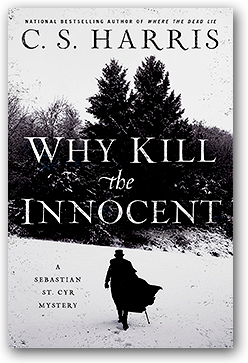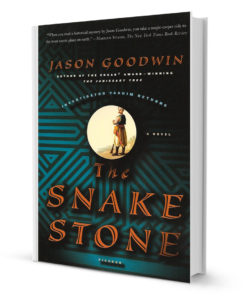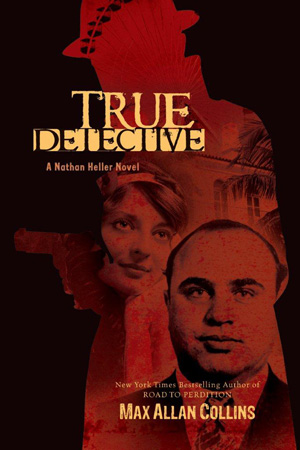This is the 13th installment in the "Sebastian St. Cyr" series by author
C.S. Harris, but she is a new author to me. Set in 1814 London, this is the Regency era
(1788-1832), described by history professor Harris (19th C European history) as
"The age of Napoleon and Jane Austen, of Beau Brummel and Lord
Byron. Ladies wear filmy dresses and dampen their petticoats, while
gentlemen duel with pistols at dawn and agonize over the cut of a coat.
Fortunes are won and lost at the turn of a card, a decades-old war has
turned Europe into a ravaged battlefield, and in London, a child of six
can still be hanged for stealing a handkerchief." This is also the era when women were to be seen and not heard, so when talented piano virtuoso twins James and Jane Ambrose reach adulthood, he is allowed to become a concert pianist before he dies of tuberculosis. Jane is not allowed to appear in public so is married to a playwright, for whom she writes extravagently popular operas that are performed under his name. She is allowed to be a piano teacher, including among her students Princess Charlotte, the heir presumptive to the throne. When Jane's body is found in a poor part of London, lying in a snow drift with her head bashed in, the throne moves quickly to proclaim it an accident and stop any further investigation that might bring negative attention to the royal house.
However, the body was found by Hero, wife of Sebastian, Viscount Devlin, and daughter of the most powerful force behind the throne, Charles, Lord Jarvis, the Prince Regent’s cousin and fixer; although her father won't help Hero, she refuses to let Jane's murder go unchallenged. Sebastian and Hero are soon deep into the personal and political secrets surrounding the throne that involve smuggling, treachery and murder.
London is in the midst of a severe winter and an historic "Great Fog." The snow is deep, the cold is bitter, and the mighty Thames River freezes, bringing commerce to a literal standstill. The poor are freezing to death or dying of starvation while the Prince Regent, Charlotte's father, goes on spending money to eat, drink, and be merry. This was, according to Harris' extensive historical "Author's Note," the last year that London celebrated a "Frost Fair," when booths for businesses and entertainment were set up on the river itself, drawing huge crowds out on to the ice. It ended tragically when a sudden warming thaw caused the ice to break up and unknown numbers of people to die.
Obviously I have missed much of the back story to this series and will make that up in the future. Nevertheless it was an enjoyable read because I love stories with strong female protagonists, good mysteries, learning about a period in history, and almost anything set in England. Reviews provide further details:
Kirkus and
Publishers Weekly.






